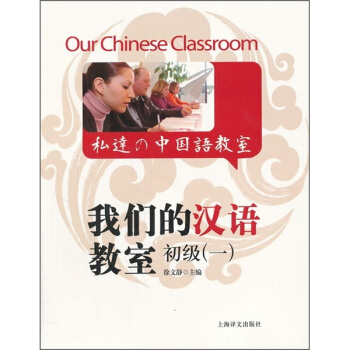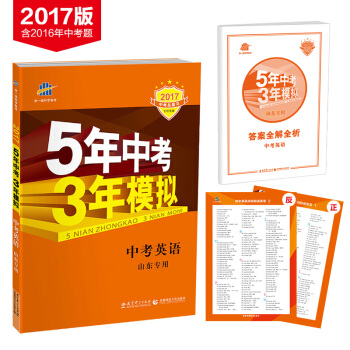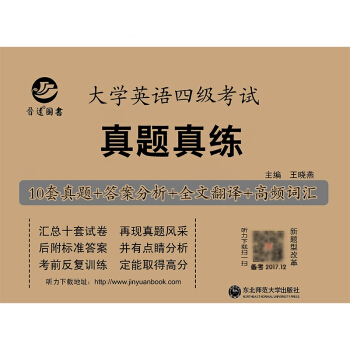![当代国外语言学与应用语言学文库:怎样教英语 [How to Teach English]](https://pic.windowsfront.com/10033733/a6020e93-0379-4efb-89f1-495e381ec8ac.jpg)

具体描述
内容简介
An introduction to the practice of English language teaching How to Teach English is for teachers at an early stage in their careers and for teachers preparing for examinations such as The Certificate in English Language Teaching to Adults or The Certificate in TESOL. This book gives clear examples and explanations of current teaching practice which teachers can put into immediate use. How to Teach English offers: ideas on what makes a good teacher and what makes a good learner descriptions and examples of language teaching methods. and a new model of good leaching practice-the ESAmodel an essential introduction to grammar teaching sequences for grammar, vocabulary, and the individual language skills ideas on the exploitation of textbooks and the planning of lessons a What if? review of common problems in the classroom a Task File of photocopiable training tasks appendices on equipment, further reading and phonetic symbols.作者简介
哈默,Jeremy Harmer is the author of the highly acclaimed and ever popular The Practice of English Language Teaching.内页插图
目录
Preface by HallidayAcknowledgements
Introdction
1 How to be a good teacher
What makes a good teacher?
How should teachers talk to stueents?
How should teachers give instructions
Who should talk in class?
What are the best kinds of lesson?
How important is it to follow a pre-arranged plan?
Conclusions
Looking ahead
2 How to be a good learner
Why is it difficult to describe a good learner?
How imprrtant is the studentsmotivation?
Who is responsible for learning?
What is reponsible for learning?
Whats special about teaching adults?
How shoule we teach the sifferent levels?
Conclusions
Looking ahead
3 How to manage teaching and learnign
How should teachers use their physical presence in class?
How Should teachers use their voices in class?
How SHould teachers mark the stages of a lesson?
What different student groupings can teachers use?
How can teachers evaluate the success or failure of their Lessons?
Conclusions
Looking ahead
4 How to describe learnincl and teaching
What do we know about language learning?
What elements are necessary for successful language learning in classrooms?
How do the three elements orES,4 fit together in lesson sequences?
What teaching models have influenced current teaching practice?
Conclusions
Looking ahead
5 How to describe languaoe
What does this chapter do?
Sentence constructions
Parts of speech
Noun types
Verb types
Verb forms
Pronouns
Adjectives
Adverbs
Prepositions
Articles
Conjunctions and conditionals
Forms and meanings
Language functions
Words together: collocation
Speaking and writing
Pronunciation
Conclusions
Looking ahead
6 How to teach language
What does language study consist of?.
How should we expose students to language?
How can we help students to understand meaning?
How can we help students to understand language form?
How should students practise language?
Why do students make mistakes?
How should teachers correct students?
Where do language study activities fit in teaching sequences?
Conclusions
Looking ahead
7 How to teach reading
Why teach reading?
What kind of reading should students do?
What reading skills should students acquire?
What are the principles behind the teaching of reading?
What do reading sequences look like?
More reading suggestions
Conclusions
Looking ahead
8 How to teach writing
Why teach writing?
What kind of writing should students do?
What do writing sequences look like?
How should teachers correct writing?
What can be done about handwriting?
How does writing fit into ESe/?.
More writing suggestions
Conclusions
Looking ahead
9 How to teach speaking
What kind of speaking should students do?
Why encourage students to do speaking tasks?
What do speaking activities look like?
How should teachers correct speaking?
What else should teachers do during a speaking activity?
How do speaking activities fit into ESA?
More soeaking suestions
Conclusions
Looking ahead
10 How to teach listening
Why teach listening?
What kind of listening should students do?
Whats special about listening?
What are the principles behind the teaching of listening?
What do listening sequences look like?
Where does video fit in?
More listening suggestions
Conclusions
Looking ahead
11 How to use textbooks
What age the different options for textbook use?
What do adding,adapting and replacing look like?
So why use textbooks at all?
HOW should teachers choose textbooks?
Conclusions
Looking ahead
12 How to plan lessons
Whyplan at all?
What age the aims of a plan?
What should be in a plan?
What questions do we need to ask?
What form should a plan take}
HOW should teachers plan a sequence of lessons?
Conclusions
Looking ahead
13 Whatif7
What if students arc all at different levels?
What if the class iS very big?
What if students keep using their own language?
What if students age uncooperative?
What if students dont want tO talk?
What if students dont understand the listening tape?
What if some students.in—groups finish before everybody else?
Conclusions
Task File
精彩书摘
Beginners: success is easy to see at this level, and easy for the teacher toarrange. But then so is failure! Some adult beginners find that languagelearning is more stressful than they expected and reluctantly give up.However, if things are going well, teaching beginners can be incrediblystimulating - and great fun. It may be restricting for the teacher, but thepleasure of being able to see your part in your students success isinvigorating.Intermediate students: success is not so easy to perceive here.Intermediate students have already achieved a lot. Gone are the days whenthey could observe their progress almost daily. Sometimes, it may seem tothem, they dont improve that much or that fast anymore. We often callthis the plateau effect, and the teacher has to make strenuous attempts toshow students what they still need to learn without being discouraging.One of the ways of doing this is to make the tasks we give them morechallenging and to get them to analyse language more thoroughly. Weneed to help them to set clear goals for themselves so that they havesomething to measure their achievement by.Advanced students: they already know a lot of English. There is still thedanger of the plateau effect (even if the plateau itself is higher up) so wehave to create a classroom culture where learning is not seen as learning alanguage httle-bit-by-little-bit. At the advanced level, we need to be ableto show students what still has to be done and we need to provide goodclear evidence of progress. We can do this through a concentration not somuch on grammatical accuracy, but on style and perceptions ofappropriacy, connotation and inference, helping students to use languagewith more subtlety. It is at this level, especially, that we have to encouragestudents to take more and more responsibility for their own learning.Although many activities can clearly be used at more than one level(designing newspaper front pages, writing radio commercials etc.), thereare some which are obviously more appropriate for beginners, for example,pronunciation practice of/o/, simple introduction dialogues, while thereare others which are more appropriate for advanced students, such asdiscursive essay writing or formal debating. One obvious difference in the way we teach different levels is language.Beginners need to be exposed to fairly simple language which they canunderstand. In their language work, they may get pleasure (and goodlearning) from concentrating on straightforward questions like Whatsyour name?, Whats your telephone number?, Hello, Goodbye etc.Intermediate students know all this language already and so we will notask them to concentrate on it. The level of language also affects the teachers behaviour. At beginnerlevels, the need for us to rough-tune our speech is very great: we canexaggerate our voice tone and gesture to help us to get our meaning across.But at higher levels, such extreme behaviour is not so important. Indeed,it will probably come across to the students as patronising.前言/序言
近年来,国际交往日益频繁,国际贸易急速发展,出现了一种前所未有的现象:学外语、教外语、用外语的人多了;研究语言学和应用语言学的人多了;开设这方面专业的高校也多了,语言学硕士生和博士生也多了。就是不以此为专业,学习语言学和应用语言学的也不乏其人。为了给从事这个专业的师生提供便利,同时又帮助一般外语教师、涉外工作者以及汉语研究者开阔思路,扩大视野,提高效率,我们献上这套内容崭新而丰富的丛书——英文版《当代国外语言学与应用语言学文库》。文库首批推出54部外国英文原著,它覆盖了语言学与应用语言学26个分支学科。这批书是我们与各地有关专家教授反复研究之后精选出来的。出版这样大规模的语言学与应用语言学丛书,这在我国语言学界和外语教学界是破天荒第一次。
我们这样做,抱着什么希望呢?总的说来,是遵循教育部关于加强一级学科教育的指示,在世纪之交,推出一套书来给中国的外语教育领航,同时也给一般外语工作者和汉语研究者提供信息,拓宽思路。
我们希望这个文库能成为进一步带动外语教学改革和科研的发动机;我们希望它能成为运载当代外国语言学理论、语言研究方法和语言教学方法来到中国的特快列车;我们希望,有了这套书,语言学与应用语言学专业师生就能顺利地进行工作;我们希望,通过读这套书,青年外语教师和外语、汉语研究者能迅速把能力提高,把队伍不断扩大。
用户评价
初次接触这类专业性极强的文库丛书,我最大的感受是其学术视野的宏大与纵深。它似乎并非简单地罗列知识点,而是构建了一个完整的知识图谱,将各个看似零散的理论点巧妙地串联起来,形成一个相互支撑的知识体系。从目录结构来看,它似乎遵循了一种从宏观到微观,再到实践应用的递进逻辑,这对于一个初学者来说,可能需要一些耐心去消化,但对于有一定基础的读者而言,无疑是一次梳理和提升的机会。我注意到其中对一些经典理论流派的梳理非常细致,不仅仅停留在概念的解释层面,还深入探讨了它们产生的历史背景和社会语境,这种深度分析让人感觉到作者并非站在一个旁观者的角度叙述,而是真正沉浸在学术对话之中。尤其是一些前沿观点的引入,处理得非常谨慎,既肯定了其创新性,又保持了必要的批判性审视,这种平衡感在很多同类著作中是难以寻觅的。它让人感觉到,作者是在引导我们进行一场高质量的学术思辨,而不是简单地灌输既定答案。
评分作为一位长期关注教育实践的业内人士,我最期待的是这类理论著作如何实现与实际操作的有效对接,毕竟理论的价值最终要体现在效果上。虽然我尚未完全读完,但从其章节标题和某些段落的措辞中,我能捕捉到一种强烈的“面向应用”的倾向。它似乎并不满足于停留在纯粹的象牙塔内进行抽象思辨,而是努力去思考这些前沿理论如何转化为课堂上可操作的教学策略或评估工具。我特别留意了关于“情境化学习”和“个性化反馈机制”相关的论述,它们似乎在试图打破传统教学模式的僵化,提出更具人文关怀和适应性的教学框架。这种对实践层面的关照,使得这本书超越了一般的理论介绍,而更像是一份具有前瞻性的“行动指南”。它提出的问题都是当前教育领域亟待解决的痛点,并且试图从更深层次的认知科学或社会语言学角度去寻找根源性的解决之道,这种务实的态度令人非常欣赏。
评分这本书在语言风格和叙事节奏的把控上,显示出了一种罕见的平衡艺术。它成功地在保持学术的严肃性和可读性的之间找到了一个精妙的平衡点。一方面,术语的运用准确、逻辑链条清晰严密,绝无含糊其辞之处;另一方面,作者在引入复杂概念时,并没有采用堆砌佶屈聱牙的句子来故作高深,而是运用了大量精妙的比喻和清晰的案例分析来辅助阐释,使得即便是初次接触这些理论的新手,也能大致领会其核心要义。阅读过程中,我几乎没有感觉到“被学术性压倒”的疲惫感,更多的是一种思维被持续激发、探索欲不断被满足的阅读快感。这种叙事上的松弛有度,体现了作者高超的文字驾驭能力,他们仿佛是高明的向导,带着读者穿越复杂的理论迷宫,总能在关键节点提供清晰的指引,让人既敬佩其学识,又感到亲近和受益。
评分这本书的引文和注释系统构建得极其扎实和规范,这一点对于需要进行深入研究的读者来说,简直是福音。我随意翻开任何一个章节,都能看到详尽的脚注或尾注,这些引用来源覆盖了从早期奠基性的经典文献到近两年发表的顶尖期刊文章,显示出编者团队具有极强的文献追踪能力和学术敏感度。更令人称道的是,很多注释并非简单的文献罗列,而是包含了对原著核心观点的精炼总结或补充说明,这极大地丰富了主文的内涵,使得读者在不被打断阅读流畅性的前提下,可以随时深入挖掘感兴趣的次要信息。这种“主动式”的注释设计,远超出了教科书式的标准,更接近于研究人员撰写的高质量综述报告。此外,索引部分的详尽程度也值得称赞,关键词的选取精准且覆盖面广,这对于日后需要快速检索特定概念或人名的研究者来说,是节省时间的利器。总而言之,这本书的“外围工程”——那些支持主体的学术基础设施——做得非常专业和到位。
评分这本书的装帧设计着实让人眼前一亮,纸张的质感很有分量,拿在手里感觉沉甸甸的,透着一股学术的严谨。封面设计简洁大方,那种留白的处理方式,让我想起了一些欧洲现代主义的艺术风格,透露出一种内敛的自信。我特别喜欢字体选择,宋体与西文字体的搭配非常协调,既保证了阅读的舒适度,又不失现代感。虽然内容本身我还没有深入研读,但仅仅是翻阅目录和前言部分,就能感受到编者团队在选题和编排上的用心良苦。尤其是那些跨学科的引用标注,显示出他们对相关领域知识的广泛涉猎,这对于任何想要系统性学习某一领域的读者来说,都是一个极大的加分项。我注意到排版上的一些细节,比如章节之间的过渡页,色彩的运用非常克制和高级,一点也不显得花哨,反而能让读者在长时间阅读后得到视觉上的放松。这种对细节的极致追求,往往是衡量一部学术专著质量的重要标准,它预示着内容本身的打磨也必然是精益求精的。这本书放在书架上,本身就是一件赏心悦目的陈设品,体现了阅读者对知识的尊重和品位。我期待着深入阅读之后,能发现其内在逻辑的精妙结构,就像欣赏一件设计精巧的机械装置一样。
评分幼儿教学,简单易懂,没有什么生词
评分一起买了5本书,选择了最先阅读这一本。刚读完一二章,还没有太深入话题。总体感觉不错。
评分是正版,不过早起外研社的书都一个毛病。用纸比较一般。
评分给别人买的,朋友说理论的东西很多
评分1.词汇:词汇是英语学习很重要的一部分,但是不要死记硬背,最好联系例句,这样对记忆也有很好的帮助
评分书的质量很好 发货速度很快 赞!
评分非常好?
评分帮同事买的,她要看~至少包装什么的很好
评分很好!很有用!值得购买!
相关图书
本站所有内容均为互联网搜索引擎提供的公开搜索信息,本站不存储任何数据与内容,任何内容与数据均与本站无关,如有需要请联系相关搜索引擎包括但不限于百度,google,bing,sogou 等
© 2025 book.coffeedeals.club All Rights Reserved. 静流书站 版权所有



![杜登德语语法 [Der kleine Duden: Deutsche Grammatik] pdf epub mobi 电子书 下载](https://pic.windowsfront.com/11499048/5405218cN70fd1089.jpg)

![世界名著典藏系列:动物庄园(英文全本) [Animal Farm] pdf epub mobi 电子书 下载](https://pic.windowsfront.com/10104748/rBEIDE_RuQcIAAAAAADekq0UAGYAAAfjgErzSsAAN6q630.jpg)
![小学生喜爱的英语幽默故事 [English Humorous Stories for Pupils] pdf epub mobi 电子书 下载](https://pic.windowsfront.com/10819425/85c7f3aa-26a4-4fb0-95a6-bd8c3679df5a.jpg)



![书虫·牛津英汉双语读物:象人(1级)(适合初1、初2年级) [The Elephant Man] pdf epub mobi 电子书 下载](https://pic.windowsfront.com/11217515/57ea2e8bN6b17ab4c.jpg)



![实战交传(英汉互译)(附光盘) [Field Consecutive Interpretation] pdf epub mobi 电子书 下载](https://pic.windowsfront.com/11027021/57d648a9N1639ed75.jpg)





![呼啸山庄(英文版) [Wuthering Heights] pdf epub mobi 电子书 下载](https://pic.windowsfront.com/10048489/57995e93N29a60268.jpg)